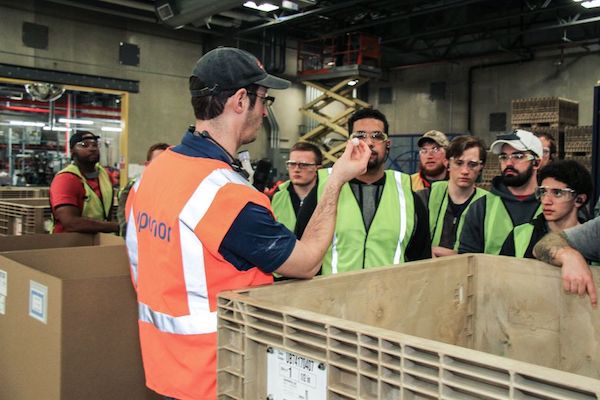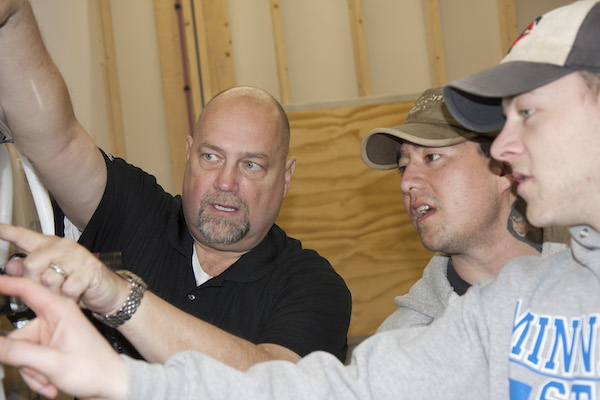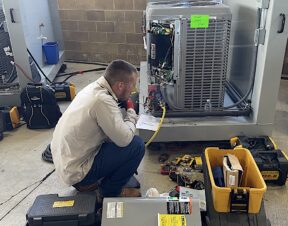When it comes to new piping technologies that some say are ‘degrading’ the trade, is it the product that’s causing a reduction in skilled labor? Or is it the lack of skilled labor that’s moving the plumbing and heating industry towards faster, simpler products?
I’ll admit, when I was first handed a piece of PEX pipe and was told, “This is the future of piping,” I balked a bit at the thought. Plastic offering a higher quality and durability than tried-and-true copper? No chance.
But, as I considered the prospect further, I noted some other changes occurring at the time. Stainless-steel and aluminum heat exchangers were replacing cast-iron block and sectional boilers; composite trench drains supplanted traditional cast-concrete solutions; and variable speed pumps were substituted for common circulators. So why not a plastic pipe?
All these advances sought to improve upon existing solutions, and each was met with some degree of resistance. “You are taking the skill out of the trades” and “I trust only the products I currently use” were common responses to the introduction of anything that strayed from the norm. The resonating conclusion from these encounters: Change is hard. Nevertheless, change is necessary.
New products in the market today continue to simplify the way in which we construct and renovate our buildings. While some consider these products innovative and forward-thinking, others find them to be degrading the skill level of the trade.
But are the products the cause or the effect?
In my experience training contractors over the past decade, I routinely hear comments suggesting that the PEX (crosslinked polyethylene) solution my company offers requires “no skill” to assemble. While I take some exception to the statement, I can sympathize with the sentiment. Welding, soldering and other traditional methods are an art, so they took a long time to perfect. But do we still have a talent pool as vast as we did 30 years ago? Do we have motivated individuals willing to take that time?
Just as frequent as the commentary on skill level is the phrase “good help is hard to find.” No-show hires, gone-after-a-week employees, and general turnover are occurring more often than not these days. So what is the real problem here?
The answer to that question is perception. College has become a nearly absolute path for high school graduates, with anything less being viewed as a societal shortcoming. The result is a large percentage of a generation possessing a degree, while facing fewer employment opportunities and significant debt. Furthermore, there’s also an unwillingness to work because of a belief they are above the opportunity. Changing this mindset is imperative to the future of our trade. We have an aging group of talent and very few people to replace them. Before long, we will lack individuals in critical positions to install, service and repair appliances and products vital to our way of life.
Changing mindsets
I recall my approaching high school graduation and consultations with guidance counselors revolving around SAT scores and college applications. I hark back to conversations with friends and relatives where the question “What will you do after you graduate?” almost became rhetorical. I remember the emotional burden of awaiting acceptance letters in fear of disappointing loved ones. It was as if no other options existed, and no other paths were acceptable.

If this was the case more than a decade ago, what is the message today? A recent decline in college enrollment, attributed largely to cost, may trigger a resurgence in trade-school enrollment, but we cannot be reliant solely on this as a solution. We need to be proactive in our approach to solving the problem.
In the interest of full disclosure, I did attend college and obtained a four-year degree in Architectural Engineering. Less than a year after graduation, I found myself in a warehouse loading trucks with drainage products. From there to here is a long story. Aside from the debt, I do not regret my path, as it led me to where I am today. However, I do reflect on how little consideration I gave to trade schools and the negative perception I had of them — a perception that is inaccurate, unfair and remains in need of changing today.
We must communicate to our youth that the trades are not the lesser of post-high school options. In fact, qualified labor is in such high demand, it stands to become the greater. This message needs to reach our junior high and high schools and be supported by our educators and parents.
Manufacturers should motivate their vast network of trade organizations, reps, engineers, distributors and contractors to conduct educational seminars. We need to inform our children that they have significant opportunities that may not involve a four-year degree. To reinvigorate the industry, we must help groom and mentor those with a passion for the trades.
I now conduct 60 to 100 trainings annually to a variety of installers. I am regularly astounded by the lack of engagement from a large portion of the audience. Some of this can be attributed to the aforementioned preconceived notions of prior generations. But for the apprentices and youth, it’s disappointing. One or two from a workshop for 30 might approach me with additional questions or comments at the end of a training. For some, the indifference may stem from a sheer lack of passion for what they do. Others may be intimidated by far more experienced tradespeople who aren’t fans of a new technology.
In either case, changing the negative perception of our industry would promote an influx of individuals with a genuine interest in the trades. In turn, we would see an enhanced desire for learning and open-mindedness to new technologies — new technologies these engaged people would help to create.
Meeting the new needs of the industry
We are living through a significant transition in our trade. To ensure the continued function of our building infrastructure, the industry has been forced to adjust the goal of innovation. Simplicity helps cast a wider net of capable installers. Understandably, this upsets those who have spent years mastering a skill set that needs to be put to use less frequently today.
The technology world is continuously shaped by its users. Computers, smart phones and tablets are routinely deconstructed and reconstructed to best meet our daily needs. Software updates are released regularly to enhance our experience. Similarly, mechanical and plumbing products are changed to meet the needs of the field.
Products and the people who work with them will remain ever-changing. Resistance to change is inherent, but as with all facets of life, adaptation is necessary for survival. Condemning a product because of its simplicity ignores the fact that innovation is bred from necessity. All materials, simple or complicated, can be installed properly and clean, or improperly and sloppy. The artist (craftsperson) controls the artistry (craftsmanship), regardless of the medium (product) by which he or she creates it.
Let’s go to work on increasing our number of artists. Let’s mold the next generation of tradespeople to help craft innovation beyond our existing solutions.
It all boils down to education. It’s time to teach our youth that mastering a trade can provide a highly rewarding career, a great life and, most importantly, accomplishments they can be extremely proud of.
So much of the plumbing and heating work we do is concealed behind walls and beneath floors, hardly noticeable by a large percentage of those that use the spaces we create. But we are responsible for so much more than even we recognize — until something breaks. Value, satisfaction and even a bit of glamour can be found in being the person who can fix it.
Andrew Cahill is a technical sales representative with Uponor. He can be reached at andrew.cahill@uponor.com.





Join the conversation: